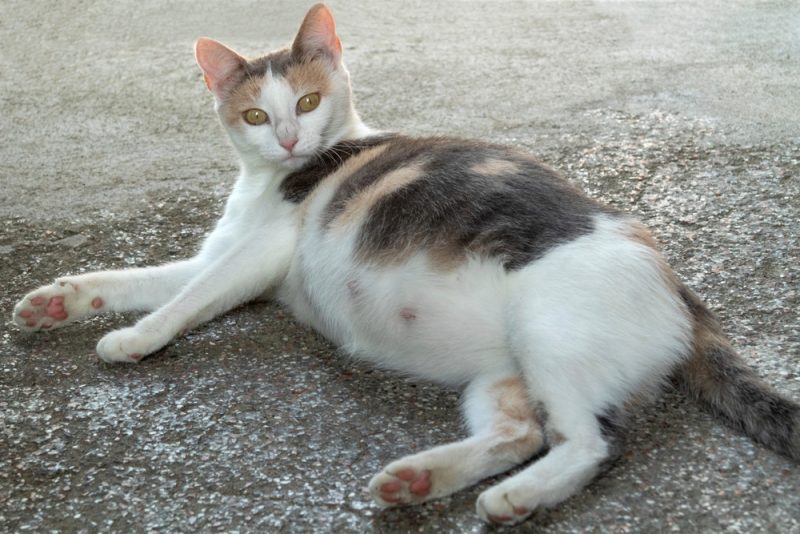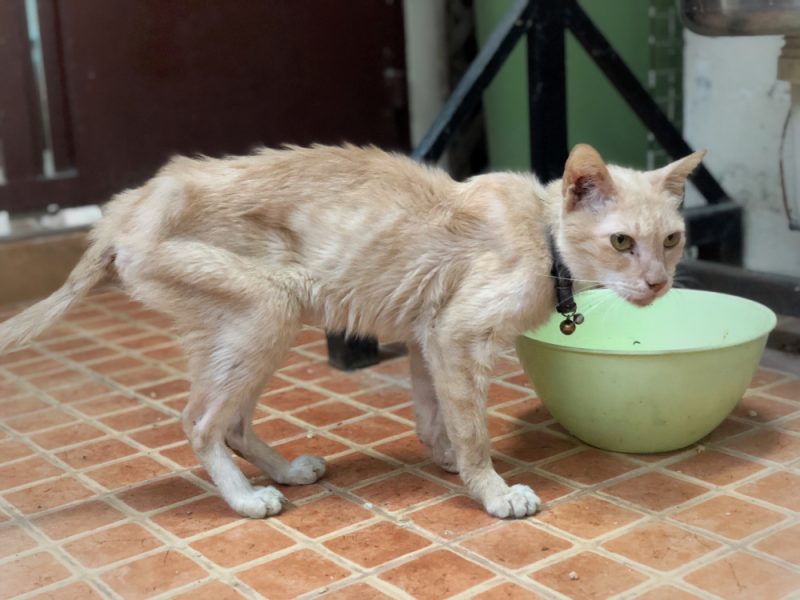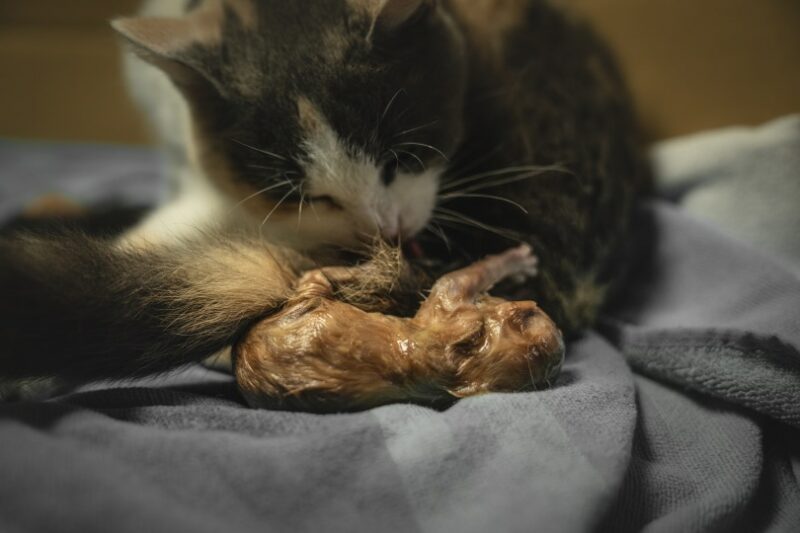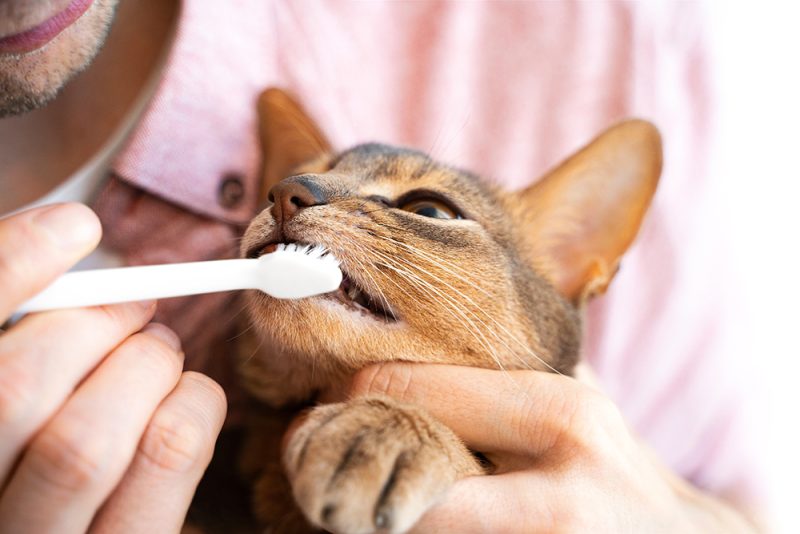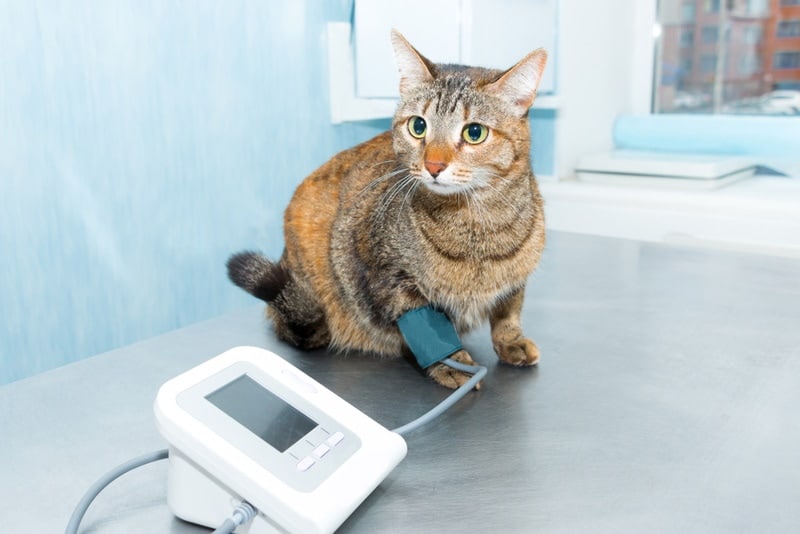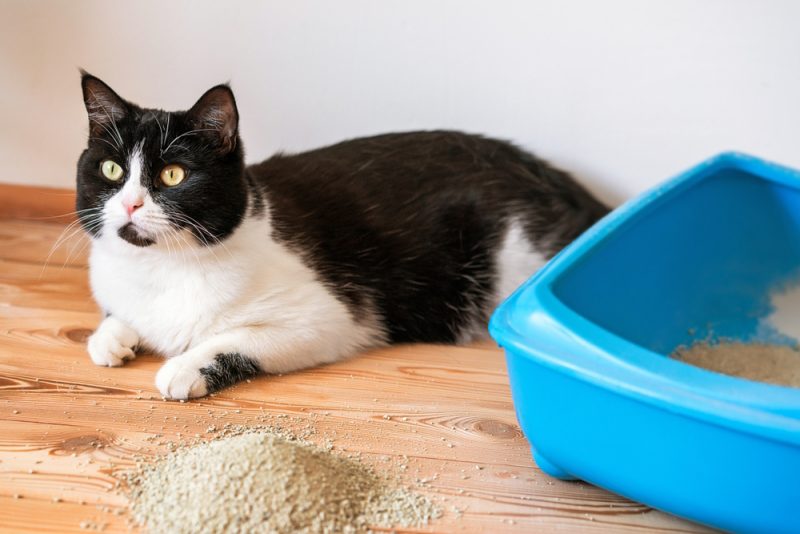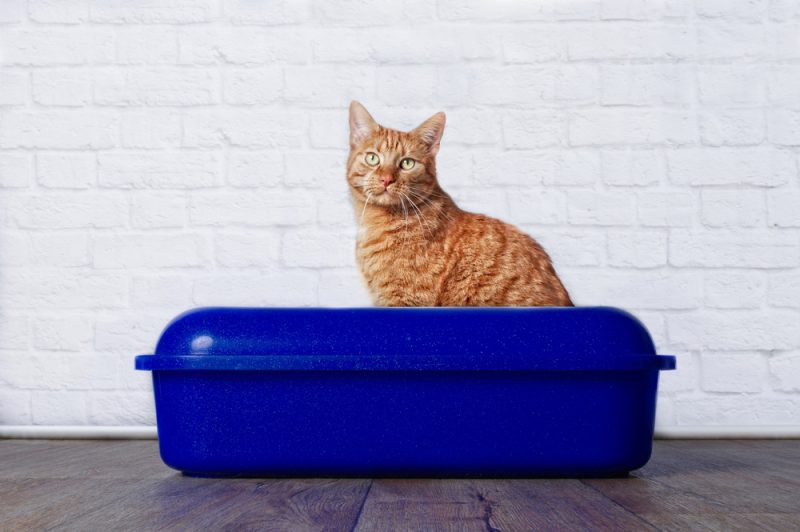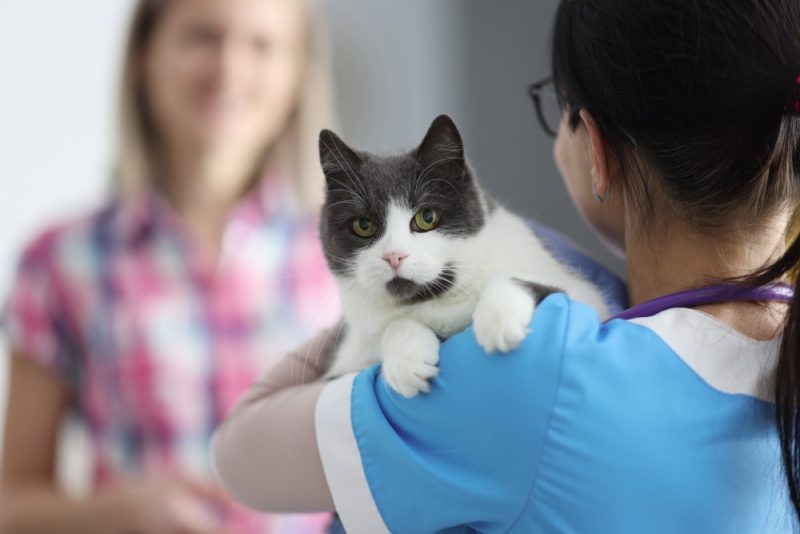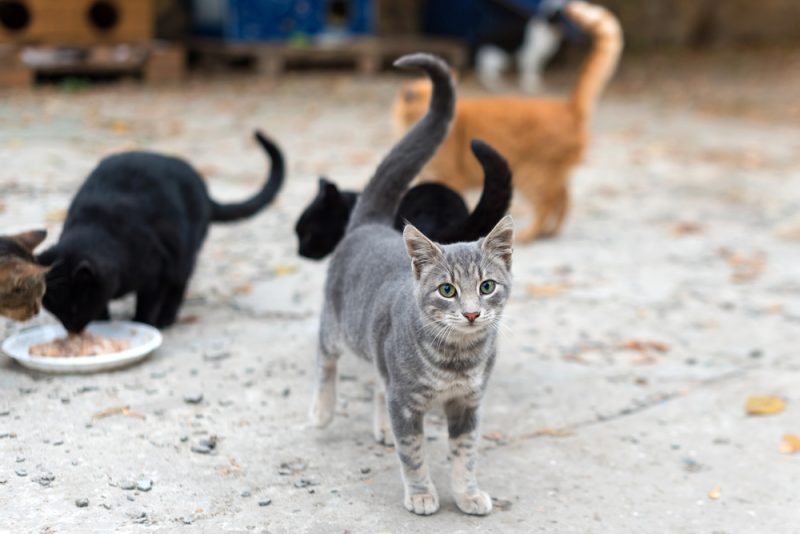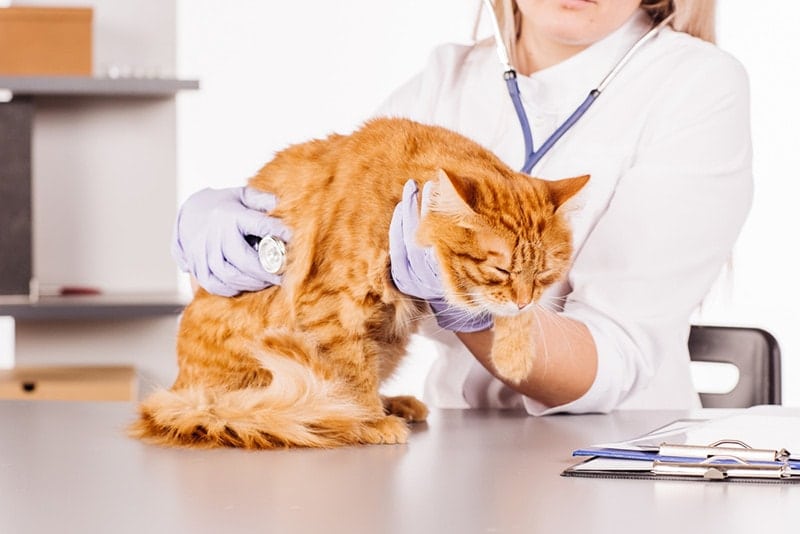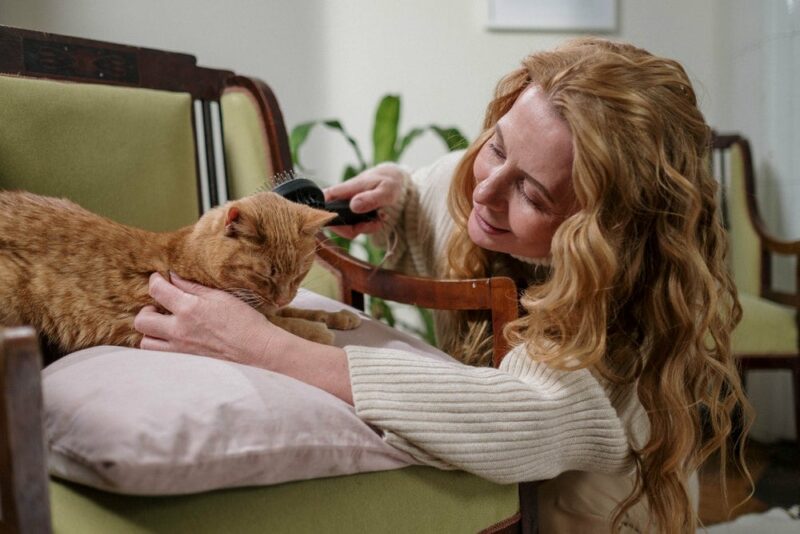In this article
View 2 More +Most veterinary professionals recommend getting your cat spayed or neutered to help control the feral cat population, reduce disease transmission between cats, and reduce the risk of health complications later in life. It can also help make it much easier to deal with your pet, as they can get pretty unsettled when in heat. However, for any number of reasons, you might find yourself with a pregnant cat that’s about to give birth.
Luckily, cats have been doing this for a long time and in most cases should be fine, unless they have pre-existing health issues, but we’re sure you still have plenty of questions, like how long your cat will be in labor. Your cat will typically be in labor for 6–12 hours once the cat begins giving birth, but it may be as long as 16 hours in some cases, or it could be shorter than 6 hours, depending on many factors. A prolonged or complicated birth can put an enormous strain on the mother, leaving her weak, dehydrated, or anemic, or it could cause one or more kittens to die if they are stuck in the birth canal.
Keep reading while we explain several other things you can expect while your cat is giving birth so you both can feel comfortable and confident about the litter of kittens about to arrive.
If your cat is giving birth and is distressed, lethargic, bleeding from her vulva, straining for 20 minutes without passing a kitten, or has a kitten visibly stuck in the birth canal, you need to contact your vet straight away! Do not waste valuable time, as you can always return to this article after your kitty and her babies have been tended to.

How Large Is a Litter of Kittens?
Most cats will have between three and five kittens, but some litters can be as large as 12. If it’s your cat’s first time giving birth, there may be fewer kittens.
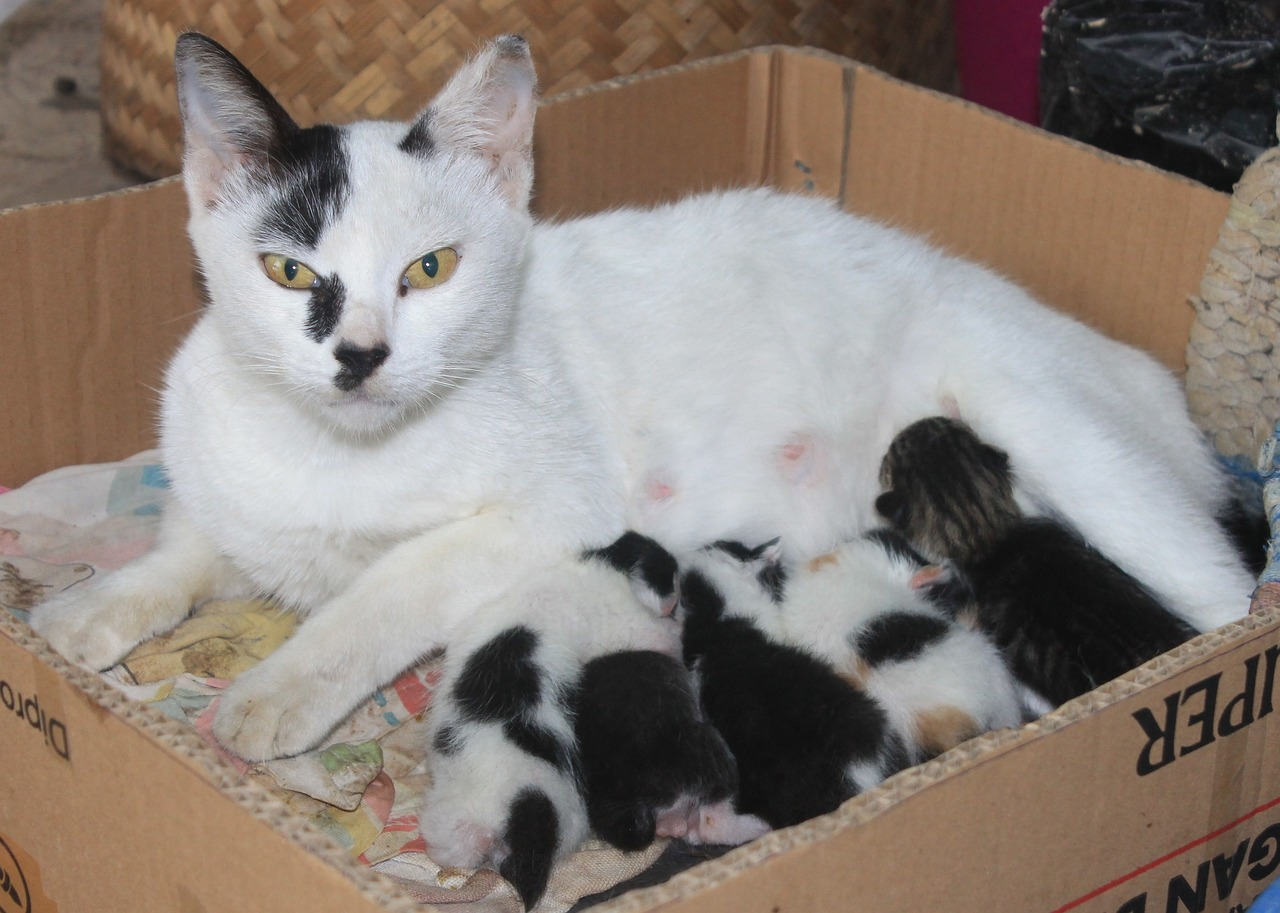
How Long Is Normal Between Kittens?
Your cat should produce one new kitten every 10–60 minutes. Any longer and it may indicate a problem. With this timeline, your cat should have enough time to complete the delivery in fewer than 6 hours, depending on the size of the litter.
How Can I Help My Cat?
Most cats know what they are doing, and in the majority of cases, there is little you will need to do besides keeping an eye on things to make sure labor doesn’t last too long, that there are no complications, or that there isn’t an issue with one or more kittens.
You will want to prepare by having a transporter box or a carrier ready to go should your cat require it. It would be wise as well to contact your vet and discuss all the signs of labor and labor complications with them before the actual event, so you can familiarize yourself with the process and are able to recognize early signs of a problem. Your vet will also be on standby in that case, for the off chance that your cat and her kittens need veterinary assistance.
You should also take steps to ensure the area is quiet and won’t be disturbed by other family members. If possible, you should increase the room’s temperature to make the cat and the new kittens more comfortable.
- During the final week of pregnancy, your cat will begin to select a nesting place to give birth. If she gives birth in the house, she will seek a quiet area away from other family members. You can help your cat by supplying plenty of towels and making sure she has her privacy.
- The mammary glands will enlarge and become visible in the last week of pregnancy, sometimes with a little bit of milky discharge from the nipples a day or two before, signaling that labor is near.
- The cat’s temperature may drop before labor.
- You may notice increased vocalizations, pacing, grooming, and other behaviors that are unusual for your cat.
- You may also notice a decrease in appetite.

What Happens During Birth?
Birth occurs over three stages, with the second and third stages repeating until all kittens have arrived.
- Stage 1 – The mom will become restless, scratch at the nesting bed, or even start panting to signal she is in labor. This stage may last up to 36 hours in some cats who are having their very first litter.
- Stage 2 – The second stage is the arrival of the kitten. They can come out head first or feet first. Kittens usually arrive at 45-minute intervals, but it can vary considerably up to 1 hour.
- Stage 3 – The mom will break and lick off the sac from the kitten’s face and body to get the breathing started and to dry them off. First-time mothers may not be experienced at this, in which case you need to help to gently remove the kitten from the sac so they can breathe. Afterbirth, which includes the placenta, usually comes straight after the kitten, or may sometimes come in twos after two kittens are delivered. Keep track of placentas to ensure they have all been passed because cats will often eat them. If you cannot account for all of the placentas, speak to your vet for signs of a retained placenta.
What Should I Watch for While My Cat Is Giving Birth?
- Interrupted Labor
Interrupted labor is common for cats giving birth, and this is when your cat takes a break in the middle of giving birth. It can last for up to 24 hours, and as long as your cat seems relaxed, her kittens are suckling, and she is eating and drinking without any further straining, everything is alright. You only need to be concerned if you see your cat straining to give birth for 20 minutes with no results.
- Dystocia
Dystocia is a condition where your cat is having difficulty delivering the kittens. If your cat seems to be straining to give birth but no kittens come out for more than 20 minutes or there is a kitten stuck in the birth canal, you will need to take your cat to the vet to get medical attention. Other signs you should look for are a bright red blood flow that lasts several minutes or a foul smell coming from the birth canal.
Have a carrier ready to transport the cat and all of the kittens. The vet can help by supplying medication to help with contractions or performing a c-section to remove the kittens manually. The success of either method depends on getting the mom to the vet in time. Cats often give birth at night after everyone is asleep, so make sure you plan for that.
When to See the Vet
We have already mentioned some instances when your cat and her kittens need to see the vet. Here, we have outlined it again and expanded upon it. However, this list is not exhaustive. Please consult with your vet if you have any concerns with your cat giving birth or with her kittens.

Summary
Cats usually stay in labor for roughly 6-12 hours and will produce several kittens, most often unseen in the middle of the night. However, you should prepare for every outcome to minimize the risk to your cat and the kittens. Having a carrier ready can help make sure you get to the vet in time if you need to, and we recommend contacting your vet a week or two early, so you have a number to contact after hours if there is an emergency.
We hope you have enjoyed reading this guide, and it has helped you learn more about your pet. If we have helped you prepare for your cat to deliver kittens in your home, please share this look into how long a cat can be in labor on Facebook and Twitter.
Featured Image Credit: ivona02, Shutterstock
